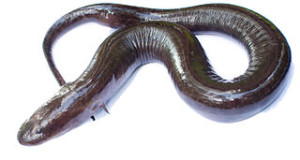As a herpetologist and New York City native, I’m thrilled by the prospect of finding wildlife, endangered or otherwise, within big cities. I was, therefore, very happy to read about the recent discovery of a population of critically endangered salamanders (Mexican Axolotls, Ambystoma mexicanum) in the heart of one of the world’s most densely populated cities.
A Pleasant Surprise
Until recently, Mexican Axolotls were known to exist in only 2 locations – the remnants of Lake Chalco and Lake Xochimilco, near Mexico City. With a total native range of merely 6.2 square miles, these unusual aquatic salamanders rank among the world’s rarest wild amphibians. Fortunately, they are well-established as pets and lab animals (please see article below). Now it seems that a third population has turned up in a most surprising spot – an artificial lake in Mexico City’s largest park, Chapultepec (please see photo).
A Tiny but Important Population
Despite heavy public usage, Lake Viejo is known to support endangered invertebrates, fishes and frogs (Rana montezumae). Upon being drained as part of an effort to eliminate exotic species, it was also found to be the home of some most unexpected residents – 26 adult Mexican Axolotls (and 3 egg masses).
Although the salamanders were heavily parasitized and exhibited deformities, they represent a valuable new population that might contribute important genetic diversity to the other 2 known wild groups.
Rare Salamanders in Austin and NYC
 The Chapultepec Park Axolotls underline the importance of observing and studying whatever habitats, natural or highly disturbed, are available to us. A number of other critically endangered salamanders live only within urban areas – the bizarre Barton Springs Salamander (Eurycea sosorum), for example, is restricted to a swimming hole (Austin, Texas) used by over 300,000 people each year!
The Chapultepec Park Axolotls underline the importance of observing and studying whatever habitats, natural or highly disturbed, are available to us. A number of other critically endangered salamanders live only within urban areas – the bizarre Barton Springs Salamander (Eurycea sosorum), for example, is restricted to a swimming hole (Austin, Texas) used by over 300,000 people each year!
I have been lucky enough to find uncommon salamanders, including the Two Lined Salamander (Eurycea bislineata) and the Red Salamander (Pseudotriton ruber), in every borough of New York City. The hardy Red-Backed Salamander (Plethodon cinereus) is even still to be found in Manhattan…so keep looking and learning!
Further Reading
Axolotl Care and Natural History
Original article describing the newly-discovered Axolotl population.
 That Reptile Blog – Reptile, Amphibian and Exotic Pet Care and Information
That Reptile Blog – Reptile, Amphibian and Exotic Pet Care and Information


